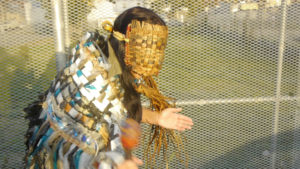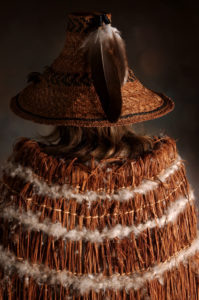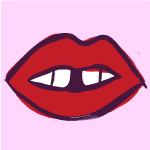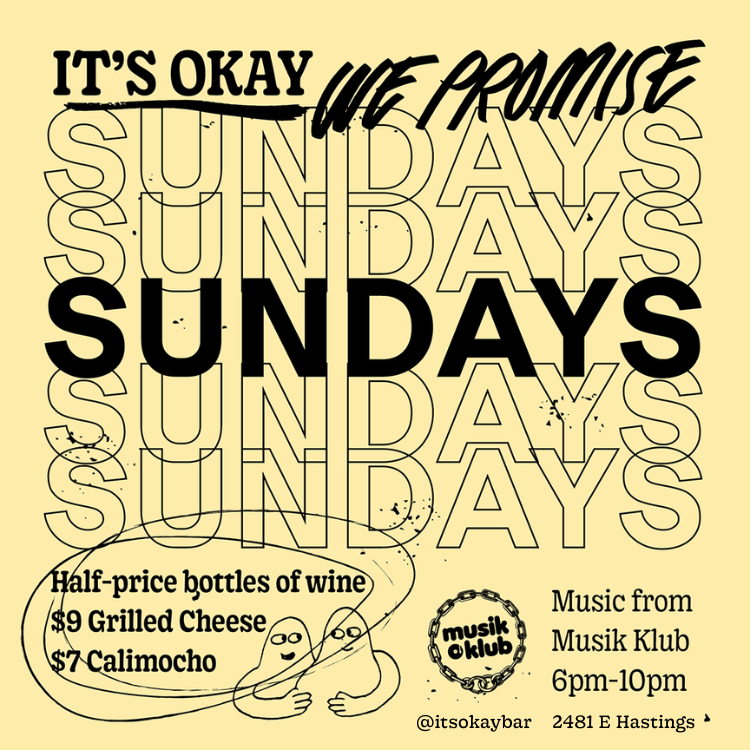Kicking off on September 13, a diverse collection of Coast Salish works will evoke ancestral teachings and unfurl the future of their art with Intangible, a new exhibit at the Bill Reid Gallery of Northwest Coast Art.
The show will be on display until December 10, showing off contemporary creations by six artists – from vibrant blown-glass sculptures, and exquisite, copper jewelry, to experimental fibre textiles, and provocative multimedia works.
“Each artist featured at Intangible comes from a unique background. Some are primarily influenced by their respective lineages, while others have found inspiration from sources within and outside their immediate community,” says Beth Carter, curator, Bill Reid Gallery.
Intangible will feature previously crafted, as well as never-before-seen works from six trailblazing Coast Salish artists, two of whom wanted to delve a little deeper. Here’s what these women had to say:

Roxanne Charles:
Each of these works is informed by my body as a historical landscape of living memory. My spiritual being is rattled by the current state of the world and I use my voice to address the various issues that surround me. Speaking out against systemic violence, traditional food security, the pharmaceutical crisis, and the fentanyl epidemic through ceremony. These works are intended to be generative. To not only document what is currently going on but also call upon the viewer to question their place within it. To engage people in conversation, promote community, spread awareness, strengthen human relationships and generate compassion. These works call out to the spiritual realm as objects made in prayer and of resilience. As cries of help and ways of reaching out to the spiritual world for guidance through ceremonies that speak to today.

Sesemiya /Tracy Williams:
My ancestral name is Sesemiya, and I am a member of the Sḵwx̱wú7mesh (Squamish) Nation. My husband’s ancestral names are Xwepilkinem and Banksht; he is from the Sḵwx̱wú7mesh and Lil’wat Nation. Sixteen years and four children (Temthumkin, Utszimalh, Meskiya7, and Avery Rose) later, we have become an emerging Salish Hunter and Gatherer family. I use the term “emerging” because we are not truly independent of modern society yet. We are not immune from the WANT or the HUNGER of things. But we are waking up from a long sleep. And in this moment of awakening – we have started to treasure the knowledge of those who walked the land, long before we were born. I am very interested in ALL things Coast Salish; traditional ecological knowledge; Sḵwx̱wú7mesh snichem (language); and cultural revitalization. I have been a basket weaver for over 20 years and descend from a long line of weavers. As such, I have intensively pursued my passion for a deep understanding of plants, animal fibres, foraging for wild food, spinning wild fibres, and learning how to read our traditional landscape from the perspective of a “Gatherer”. My husband Xwepilkinem has simultaneously been ‘growing his knowledge’ around Hunting; learning how to read landscape and weather; knowing animal patterns; understanding tracks and trapping; using ancient hunting and fishing techniques; and learning ancient methods of fire starting. There is certainly some juxtaposition to being swallowed by the city of Vancouver, while re-emerging on the pathway to Salish living as a Hunter / Gatherer family. We are far from the life that our Sḵwx̱wú7mesh Ancestors have walked – and yet, bit by bit – we are relearning the value of fire, the depths of knowledge that float in the oceans, and our unique relationship to plants and how they transform into food, fibre, or medicine. We have come back home to the Land, to her secrets and mysteries that have only begun to reveal themselves to us. We came from humble beginnings, but learned how to hunt; how to remove the mountain goat wool from the hide; how to prepare Mountain Goat Fat; how to cook and savour the taste of wild meat; how to carve the horns to make jewellery; and how to be grateful for the life that was given so that we could be nourished. It had been maybe 30 years since anyone could remember a x̱wex̱wsél’ḵen coming home to the village of Seymour Reserve and perhaps 100 years since anyone had spun Mountain Goat Wool. We prayed. We asked the x̱wex̱wsél’ḵen to teach us, for much knowledge had been lost. In return, we promised to be patient – so that we could re-learn well and so that nothing would be missed. There was really no one left to ask. Who knew how to do these things anymore? Who was practicing? Who had escaped the devastating impacts of Indian Residential Schools? Colonization? Ministry of Children and Family Services? It took some time to realize that the Mountain Goats would become our teachers. We would follow them. Watch them. Learn their patterns. Even name them on occasion. Spirit became our teacher and would show us the way in our dreams. Sometimes, we could tap back into generational memories that were brought forward by the children who were descendants of hunters and weavers. They would remember the plant that was used by their grandmother to make a natural dye – or they would remember their tá7a (grandmother) using a bucket of snow to clean the Mountain Goat Wool. Every memory mattered because this influenced how we understood our SḴWX̱WÚ7MESH WORLD. And occasionally, it was the children who become our agents of change. I remember carrying this young girl on my back, and she was helping me to gather the fluff from the fireweed. It was really magical. We prayed and asked the plants to teach us their secrets that we had long since forgotten. As we gathered, we lost sight of the others because the fireweed had grown so tall – and yet, you could hear the giggling of a tá7a (elderly lady) in front of us – as the wind carried the fluff like it was eagle down … swirling and twirling… waiting to be spun into a wild fibre that would be danced, worn, and honoured. There is no amount of money that can replace the simple beauty of how we FEEL, KNOW, and UNDERSTAND the way that we belong to our HomeLand. The way of Our Sḵwx̱wú7mesh Ancestors is important. The pathway that we choose matters to future generations of Sḵwx̱wú7mesh stelmexw (Squamish human beings). And it is for this reason that we seek the pathway of an emerging Salish Hunter Gatherer Family. IF we want our children to value the land, rivers, oceans, mountains, animals, and plants – then we must remind them of the blessings that we receive. We must teach our children the meaning of wanáxws (respect) for all things.




